#Neorealist Cinema
Text

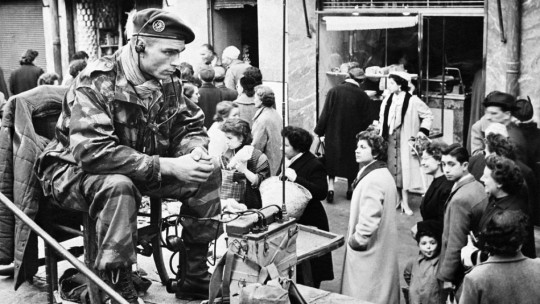
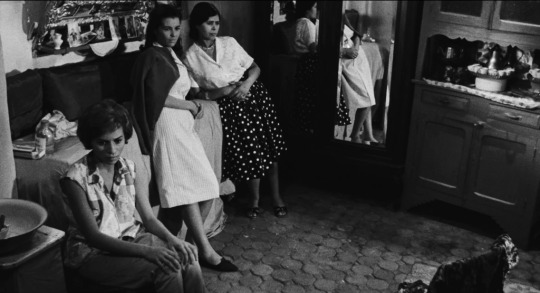
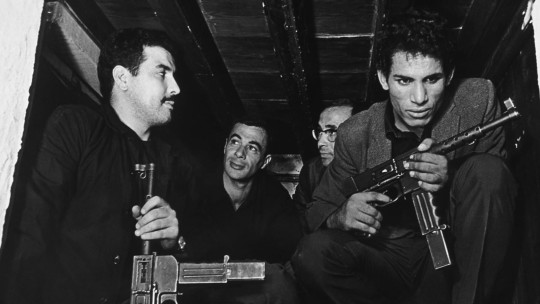
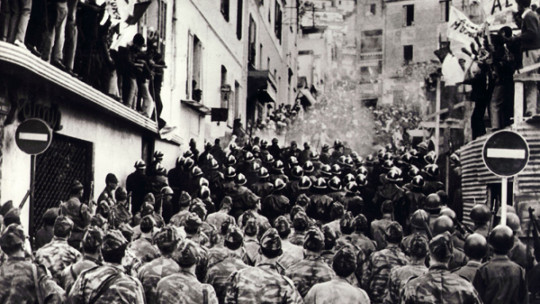
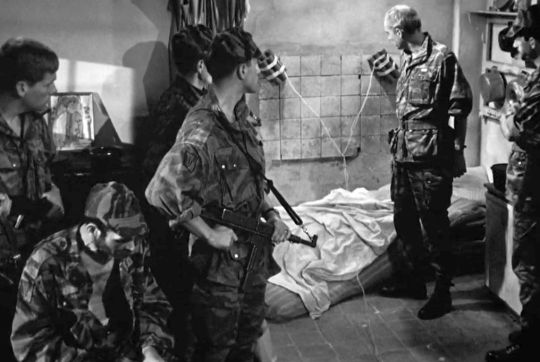
ITALIAN NEOREALIST CINEMA MEETS THE FERVENT SOCIO-POLICIAL CLIMATE OF '50s NORTH AFRICA.
FILM: "The Battle of Algiers" (1966)
CINEMATOGRAPHY: Marcello Gatti
DIRECTOR: Gillo Pontecorvo
SCREENPLAY: Franco Solinas
GILLO PONTECORVO: "The writings of Frantz Fanon were also very important for Franco Solinas, the screenwriter, and myself. We were there for a few months before the liberation and we saw everything, the hope and the joy, and we remember young people talking on the street all night. During the long months of preparation and of talking with the people, we saw that the struggle against colonialism diminished the mental state and the customs of the people. To fight colonialism they had to change themselves from what colonialism had made them."
Sources: www.proquest.com/docview/204845804, The New Arab, Los Angeles, Times, X (formerly Twitter), The New Review of Film & Television, various, etc...
#The Battle of Algiers#Maʿrakat al-Jazāʾir#The Battle of Algiers 1966#Italian Cinema#Italian Neorealism#1960s#Neorealism#Neorealist Cinema#Algerian#Cinema#معركة الجزائر#Foreign Films#Movie Stills#60s Cinema#Italian films#World Cinema#Italian-Algerian#Algerian Revolution#War Films#Film Stills#60s#Sixties#La battaglia di Algeri 1966#Algerian War#La battaglia di Algeri#Sixties Cinema#Gillo Pontecorvo#Cinematography#1966
38 notes
·
View notes
Text
Bicycle Thief Thieves
An Italian neorealist drama which gives a wider perspective of the growth of criminal organizations in post World War II Italy, centered around a kidnapping ring which preys on petty thieves in order to press them into working for the Camorra.
#bad idea#movie pitch#italian#italian cinema#neorealism#italian neorealist cinema#neorealist cinema#the bicycle thief#bicycle#camorra#mafia#organized crime#petty theft#world war ii#europe#italy#drama
0 notes
Text

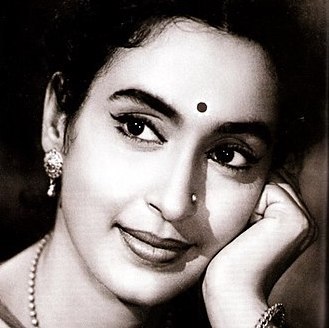
Propaganda
Anna Magnani (Rome Open City, Mamma Roma, The Rose Tattoo)—don't take my word for it, here are some of the things she was called during her career: "la lupa (the wolf) of Italian cinema," "passionate, fearless, and exciting," "the volcanic earth mother of all Italian cinema," "one of the most impressive actresses since Garbo," "Whenever Magnani laughs or cries (which is often), it's as if you've never seen anyone laugh or cry before: has laughter ever been so burstingly joyful or tears so shatteringly sad?" and maybe best of all, from Tennessee Williams, who wrote multiple roles specifically for her: "She is simply a rare being who seems to have about her a little lightning-shot cloud all her own...In a crowded room, she can sit perfectly motionless and silent and still you feel the atmospheric tension of her presence, its quiver and hum in the air like a live wire exposed, and a mood of Anna's is like the presence of royalty."
Nutan (Bandini, Anari, Seema)— In an era where plump and petite women were considered the height of beauty, Nutan was thin and gangly. While her beauty is obvious today, she was considered somewhat unusual throughout her acting career, which contains over 70 films. Contrary to the belief that female actresses careers ended after marriage, Nutan won four of her five Filmfare Awards after her marriage and the birth of her son. Nutan was known for her gorgeous, emotive brown eyes and her incredible singing voice.
This is round 3 of the tournament. All other polls in this bracket can be found here. Please reblog with further support of your beloved hot sexy vintage woman.
[additional propaganda submitted under the cut.]
Anna Magnani:

An icon of post-war neorealist italian cinema - an unbelievably good actress. Also, the first non-english speaking actress to win the Oscar for Best Actress (in 1956)!

realness!! amid the typical hollywood pristine glamour anna magnani stuck out as sexy in a really real, grounded way. so much so that even shallow 40s hollywood allowed her to come over from italy to be in some high profile movies. an icon

She smoked, she drank, she didn't give a f-. Her acting was described as explosive, with a lot of emotions and drama and they called her a she-wolf. Playwright Tennessee Williams became an admirer of her acting and wrote The Rose Tattoo (1955) specifically for her to star in, a role for which she received an Academy Award for Best Actress, becoming the first Italian – and first non-English speaking woman – to win an Oscar.

Nutan:



167 notes
·
View notes
Text
the dedication of the italian neorealist to conceptual cinematic reality reminds me of when I was a kid and I would fantasize about playing a game like the sims but with options for every concievable thing you could say or do and npcs that would respond with absolute verisimilitude and have complex systems for emotions and then I grew up and realized (considering all I did with sims was make them interact pleasantly and kiss and go to work) that what I was thinking of was called real life. I think cesare zavattini's ideal film would be going on the train without a camera and picking a random working-class person to follow and observe for the rest of the day but that is not cinema that is stalking
11 notes
·
View notes
Text

Celebrating Sara Gómez!
"In black and white, she addresses racial prejudice, discrimination, marginalization and the consequences for families, machismo, breaking with the past and social programs aimed at improving life and dignifying Cuban men and women."
Learn more in Cuba 50's article Sara Gómez: Cuba’s first female film director.
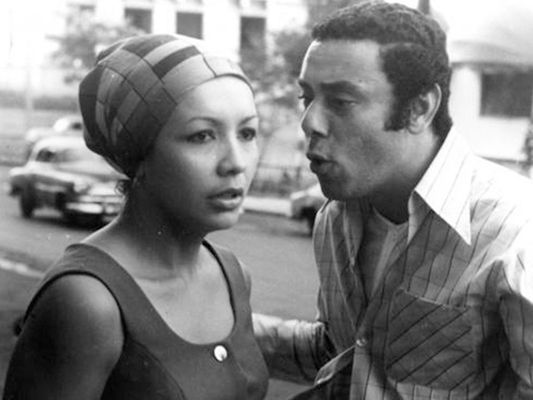

'“One Way or Another” is so brimming with life and ideas that it is shattering to learn that Gómez died, at just 31, while editing it — she succumbed to a severe asthma attack amid complications giving birth to her third child.
The postproduction was completed by her colleagues, and the movie was not shown until 1977. Since then, it has been recognized as a landmark of feminist, neorealist, Communist, Cuban, Latinx, Third World and simply world cinema.' J. Hoberman, A Feminist, Neorealist, Communist Film, and a Plain Great Movie (NY Times)
Explore her filmography on MUBI:

79 notes
·
View notes
Text
italian neorealist cinema is good at posing the really cutting questions about the human condition, such as
34 notes
·
View notes
Text
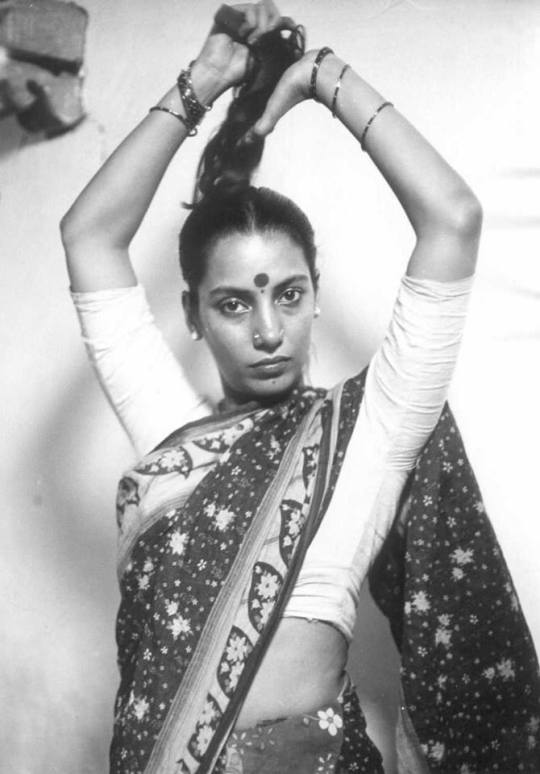
Happy Birthday, Shabana Azmi. Born on September 18, 1950, Shabana Azmi celebrates another year of a remarkable life and career in the Indian film industry. A celebrated actress with a versatile career spanning film, television, and theatre, Azmi has appeared in over 160 films.
Her work primarily focuses on independent and neorealist parallel cinema, although she has also ventured into mainstream and international projects. Highly regarded for her nuanced portrayals of unique and often non-traditional female roles across various genres, Azmi is a synonym for the authentic cinema that has always been cherished in India and loved by audiences worldwide.
She holds the distinction of winning five National Film Awards for Best Actress, along with five Filmfare Awards and numerous international honors. In recognition of her contributions, the Indian government awarded her the Padma Shri in 1998 and the Padma Bhushan in 2012. The daughter of renowned poet Kaifi Azmi and stage actress Shaukat Azmi, she is a graduate of the Film and Television Institute of India in Pune. Azmi made her cinematic debut in 1974 with the film “Ankur,” quickly becoming a leading figure in parallel cinema — a movement known for its art films characterized by serious content and realism, often receiving government support.
Many of her films are considered progressive and socially reformative, offering an authentic depiction of Indian society and its cultural norms. Beyond her acting career, Azmi is also an advocate for social and women’s rights. She is married to Javed Akhtar, a noted poet and screenwriter. Serving as a Goodwill Ambassador for the United Nations Population Fund (UNPFA), Azmi has been honored with a nominated membership in the Rajya Sabha, India’s upper house of parliament, by the President of India, in acknowledgment of her life’s work and contributions.
17 notes
·
View notes
Text
Il bidone (1955)

Desperation and despair are common features of postwar Italian cinema and the neorealist movement that emerged from the ashes of Mussolini’s Italy. Disillusioned youths and desperados are nothing new, but Fellini’s character study here captures the self-sabotage of living a lie in order to support others you love. Carlo and Augusto both have tenuous connections to their family. Carlo dotes on his wife and daughter under the appearances of being a traveling salesman, and Augusto is estranged from his daughter but hopes to reenter her life. While they can use their ill-gotten gains to attempt so, both are found out to be liars and cheats of the worst sort. The film really builds this up, our central swindlers cheating the poor out of countless Lire be it in the guise of the clergy or as government housing workers. Fellini wields a double-edged blade here, vilifying the criminals themselves through their immediate actions, but also the Roman Catholic Church and the Italian government for their corruption and indifference and ineptitude in no particular order. These men are cruel, but they are operating in a vacuum of incompetence. And yet there is space for forgiveness and a sort of empathy. Carlo fully recognizes all too late just how futile his position is, how he has trapped himself as a sheep in wolf’s clothing, and Augusto is too far beyond the pale for redemption. He sees a chance with a young girl, attempting to tell her that she has it good in some form, but his turning point is marred by one last attempt at making it large by stealing the swindle from his cohorts. The greatest swindler of all can still be trapped.
THE RULES
SIP
Someone says 'Monsigniore'.
The group assume a new false persona.
Someone is caught in a lie.
BIG DRINK
Our swindlers don vestments.
Someone mentions a sum of money.
2 notes
·
View notes
Text
Journey to Italy
By Aiden McKinney
Writer/Director Roberto Rossellini based his 1954 film, Journey to Italy, on a french novel, Duo, in which a french couple travel the south of France, and find themselves in marital discord due to the wife’s infidelity. Rossellini cast his own wife, Ingrid Bergman to play Katherine Joyce, and George Sanders as her husband, Alex Joyce. Rossellini’s version finds the Joyce’s traveling to Naples, Italy to settle the sale of a villa they inherited from their Uncle. The marriage is already troubled, as the couple don’t seem to know each other at all. Alex is stubborn and cold towards Katherine. Katherine is vulnerable but has a sharp tongue towards Alex. He feels he is wasting his time in Italy and would rather be back in London, working. Katherine wants to take advantage of their time in Italy, taking in the sites. The couple share dinner with locals and friends of their Uncle. The first dinner has Katherine jealous as Alex is overly friendly with one of the ladies. The second dinner has Alex jealous, as many of the male guests are laughing and enjoying Katherine’s company. The final straw is a conversation between the two, as Katherine shares memories of a poet friend of hers, Charles, who would send her letters describing the landscapes of the cities in Italy. Alex became immediately jealous and accused Katherine of having romantic feelings for Charles, then and now, revisited. The conflict is strong and as a viewer, I could definitely feel the tension between the two.
Rossellini had a reputation for not following the rules in Hollywood. It was a known fact that when he lacked inspiration, he would be absent from set for days, and felt it would benefit the actors to be more spontaneous, when he only provided them the script a day prior to filming. In fact, the script for Journey to Italy was only half written, leaving the rest to be improvised by the actors. This irritated the leads, in particular Sanders, who reported to the Italian Journal Cinema, “Rossellini decreed that I was an impossible man. People talk about neorealism…It’s a joke. The real reason that Rossellini films in the streets is that studio sets cost money. I’ve seen some misers before, but I’ve never met anyone who could equal him.” University of California Press Rossellini was a director of neorealism and his unconventional films honored that style. In many of his films, and in particular this one, he would use non-actors ( local Neopolitans) and dub English over their speech. Furthermore, Journey to Italy is literally a cinematic trip that uses the Italian landscapes as a metaphor to the theme of a failing marriage. Katherine visits the volcano Vesuvius, which seems to remind her of the reality and enormity of her volatile relationship. Towards the end of the film, both Katherine and Alex visit the ruins of the ancient city of Pompeii, in which archeologists are in the process of digging up petrified remains of a man and woman locked in embrace. The plot is simple, there really isn't’much of one. This film is driven by emotion and the symbolism is strong through.
The general public must not have been ready for such a neorealist, artsy film, however, because it flopped at the box office. I was not able to find a budget for the film, but it grossed $20,000 worldwide. Journey to Italy (1954) - IMDb It did, however, receive excellent reviews for its cinematography and its intimate look at a very personal experience that is relatable to so many. “In the April 1955 issue of Cahiers du cinéma , Jacques Rivette said this of the film: "And there we are . . . cowering in the dark, holding our breath, our glance suspended on the screen which grants us such privileges: to spy on our neighbor with the most shocking indiscretion, to violate with impunity the physical intimacy of human beings, subjected without knowing it to our passionate watching; and, at the same time, the immediate rape of the soul.” University of California Press More modern reviews are mixed, with the majority appreciating the cinematography, but feeling the storyline was slow and provided little insight to the depths of just why this marriage was falling apart. Imdb Journey to Italy
Youtube.com Journey to Italy trailer
IMDB Journey to Italy
2 notes
·
View notes
Text
Italian Cinema
Italian cinema has a rich and influential history that has played a significant role in the evolution of filmmaking. It is known for its passion, its dramatic flair, and its ability to blend reality with the fantastical.
Italian cinema began in the early 20th century, but it was after World War II that it really found its voice with the neorealist movement. Directors like Roberto Rossellini, Vittorio De Sica, and Luchino Visconti made films that focused on the struggles of ordinary people in post-war Italy. These films, such as "Rome, Open City" (1945), "Bicycle Thieves" (1948), and "La Terra Trema" (1948), were marked by their use of non-professional actors, their on-location shooting, and their focus on social issues.
In the 1960s, Italian cinema became known for its stylish and inventive films. Directors like Federico Fellini, Michelangelo Antonioni, and Pier Paolo Pasolini created visually stunning films that often dealt with existential themes. Fellini's "8 1/2" (1963) is often cited as one of the greatest films ever made.
In the same period, the "Spaghetti Western" genre also emerged, with directors like Sergio Leone leading the way. His "Dollars Trilogy", including "The Good, the Bad and the Ugly" (1966), has become iconic.
In recent years, Italian cinema has continued to produce acclaimed films. Directors like Paolo Sorrentino with "The Great Beauty" (2013), Matteo Garrone with "Gomorrah" (2008), and Luca Guadagnino with "Call Me By Your Name" (2017) have gained international recognition.
Overall, Italian cinema is known for its ability to combine beautiful visuals with deep, often philosophical themes. It has a strong tradition of social realism, but it is also not afraid to embrace the surreal or the fantastical.
7 notes
·
View notes
Text





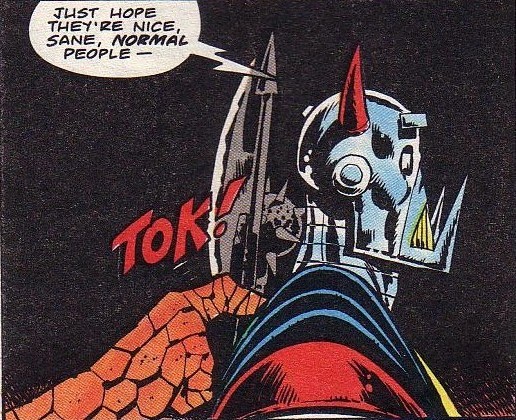


FROM HYPER-REALISTIC TOY DESIGN TO SEASONAL SWEETNESS, NUKE WAVE, FRENCH PARATROOPERS, & MORE!
PIC(S) INFO: Spotlight on set #21 in my ongoing Tumblr cover photo series.
Featuring online finds such as:
A promotional shot of the exclusive Billy Kincaid action figure from "Spawn Series: The Art of Spawn, Venom by the Hildebrandt brothers for the Marvel Masterpieces 1994 trading card series, the General Mills "Cereal Monsters," an early '80s patch of UK punk band DISCHARGE, a panel from Marvel UK's "Death's Head" Vol. 1, French paratrooper Colonel Mathieu in the 1966 docudrama/war film "The Battle of Algiers," and Slade Wilson as Deathstroke of the DC Universe.
Sources: Spawn.com/McFarlane Toys, Trader Crack's, Mark Voger, PXfuel, View Comic Online, Comics City, fuckyeahdischarge (Tumblr), various, etc...
#Tumblr Cover Photos 2023#Cover Photos#Cover Photos 2023#Tumblr Cover Photos#The Art of Spawn#McFarlane Toys#Toys#Marvel Masterpieces#Marvel Universe#Count Chocula#Gene Simmons#KISS#DISCHARGE#Apocalypse punk#Death's Head Vol. 1#The Battle of Algiers#Neorealist Cinema#Deathstroke#DC Villains#DC Universe#Billy Kincaid#Venom#Death's Head#Marvel UK#Cinema#Colonel Mathieu#Nuke Wave#The Demon#Franken Berry#Boo Berry
3 notes
·
View notes
Text
Italian Cinema
Two Women 1960
(Sophia Loren won an Academy Award for her role as a single mother trying to protect her daughter from the horrors of war in WWII)
Rome, Open City 1945
(neorealist war drama film directed by Roberto Rossellini written by Fellini starring Anna Magnani)
Down with Misery 1945
(Anna Magnani stars as a Roman housewife post-WWII pressuring her husband to join the black Mamarket to pull them out of poverty
Before Him All Rome Trembled 1945
(Anna Magnani and her partner are a pair of opera singers, who moonlight working for the Italian resistance at the time of the German occupation of Rome. Stylistically, the film is a hybrid between filmed performances of opera, and a neorealistic resistance melodrama)
Angelina 1947
Anna Magnani picture, in the public domain
L'Amore 1948
(anthology film directed by Roberto Rossellini starring Anna Magnani and Federico Fellini. It consists of two parts, The Human Voice based on Jean Cocteau's 1929 play of the same title, and The Miracle, based on Ramón del Valle-Inclán's 1904 novel Flor de santidad. The second part was banned in the United States until it was cleared in 1952 by the Supreme Court's decision upholding the right to freedom of speech.)
The Street Has Many Dreams 1948
(Comedy Starring Anna Magnani)
Volcano 1950
(Anna Magnani's revenge film against Roberto Rossellini who was filming Stromboli with Ingrid Bergman on a nearby island at the time. The film plot involves a former prostitute, Maddalena Natoli (played by Magnani), who was exiled to the island of her birth by the police. There, she suffers ostracism by the islanders, and she tries to defend the virtue of her younger sister from the advances of a deep-sea diver. )
Stromboli 1950
(Drama directed by Roberto Rossellini starring Ingrid Bergman considered a classic example of Italian neorealism. Immigrant Lithuanian woman gets isolated in an abusive relationship with a man on a secluded island where locals shun her)
The Golden Coach 1952
(Starring Anna Magnani tells the story of a commedia dell'arte troupe in 18th-century Peru)
The Rose Tattoo 1955
(Starring Anna Magnani based off a Tennessee Williams play)
The Awakening 1956
(Comedy drama starring Anna Magnoni as a nun in a Convent in Naples)
Nella città l'inferno 1959
(When the wide-eyed Lina (Giulietta Masina) lands in a women's prison, she meets a world-weary prostitute named Egle (Anna Magnani) who looks out for her. After Egle teaches Lina what she knows and begins to harden the girl, Lina commits another crime on the outside and winds up back in jail, a shell of her former self. Egle, meanwhile, who had taken a genuine liking to Lina, has tried to better herself and is shocked to see what has become of her former protégé)
The Passionate Thief 1960
(Comedy Two friends (Toto and Magnani) live by their wits working as comedians and cabaret at Cinecittà, before being invited to friends' parties or masked balls during New Year's Eve in Rome. The two, however, even though they make people laugh all the time in public, live an inner conflict, namely that the two have always to be aware to give a smile to someone, but they can never be rich and happy because they are street artists and with a precarious wage.)
Mamma Roma 1962
(Anna Magnani play a single mother retired prostitute trying to build a better life for her teenage son)
Made in Italy 1965
(Comedy anthology with Anna Magnani)
Two Nights with Cleopatra 1954
(Comedy Starring Sophia Loren playing two roles in Prince and Pauper Cleopatra tale)
Aida 1953
(Sophia Loren stars as Aida adapted by the opera by Giuseppe Verdi set in ancient Egypt)
A Slice of Life 1954
(Anthology comedy with Sophia Loren in one of the episodes)
A Day in Court 1954
(Anthology courtroom drama comedy, Sophia Loren is in one of the episodes)
Poverty and Nobility 1954
(Adapted from 19th century play of the same name, with Sophia Loren)
The Gold of Naples 1954
(Anthology drama one episode features Sophia Loren)
The Sign of Venus 1955
(Comedy revolves around an attractive woman named Agnese (Sophia Loren) who has many suitors. She lives with her cousin Cesira, who has the opposite problem with men- a poet in need of money and a man who deals in stolen cars)
Bianco, rosso e... (The Sin) 1972
(Comedy Starring Sophia Loren as a sexy nun?)
6 notes
·
View notes
Text
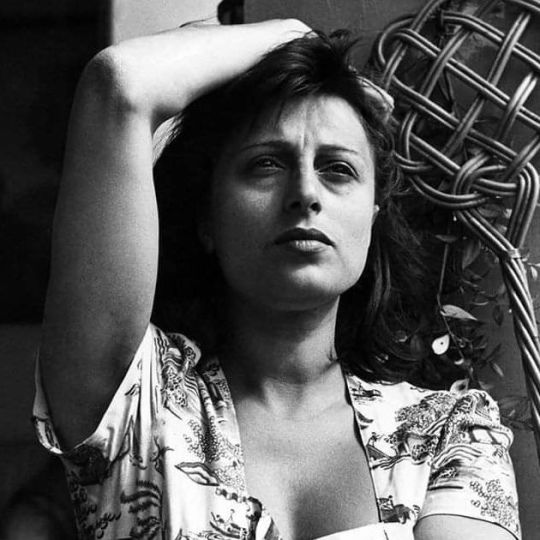

Propaganda
Anna Magnani (Rome Open City, Mamma Roma, The Rose Tattoo)—don't take my word for it, here are some of the things she was called during her career: "la lupa (the wolf) of Italian cinema," "passionate, fearless, and exciting," "the volcanic earth mother of all Italian cinema," "one of the most impressive actresses since Garbo," "Whenever Magnani laughs or cries (which is often), it's as if you've never seen anyone laugh or cry before: has laughter ever been so burstingly joyful or tears so shatteringly sad?" and maybe best of all, from Tennessee Williams, who wrote multiple roles specifically for her: "She is simply a rare being who seems to have about her a little lightning-shot cloud all her own...In a crowded room, she can sit perfectly motionless and silent and still you feel the atmospheric tension of her presence, its quiver and hum in the air like a live wire exposed, and a mood of Anna's is like the presence of royalty."
Rosemary Clooney (White Christmas)—Rosemary!!! Her singing voice is incredible, she looks stunning in everything she wears, she has this quiet gravitas on screen that I haven’t seen anywhere else!! She deserves to be known as a lot more than George Clooney’s Aunt (if anything, I think of him as Rosemary Clooney’s nephew who also went into the business). Also when she got older she had this amazing sexy raspy voice (which sadly was due to smoking a lot but doesn’t take away from the fact that it’s very very sexy)
This is round 2 of the tournament. All other polls in this bracket can be found here. Please reblog with further support of your beloved hot sexy vintage woman.
[additional propaganda submitted under the cut.]
Anna Magnani:
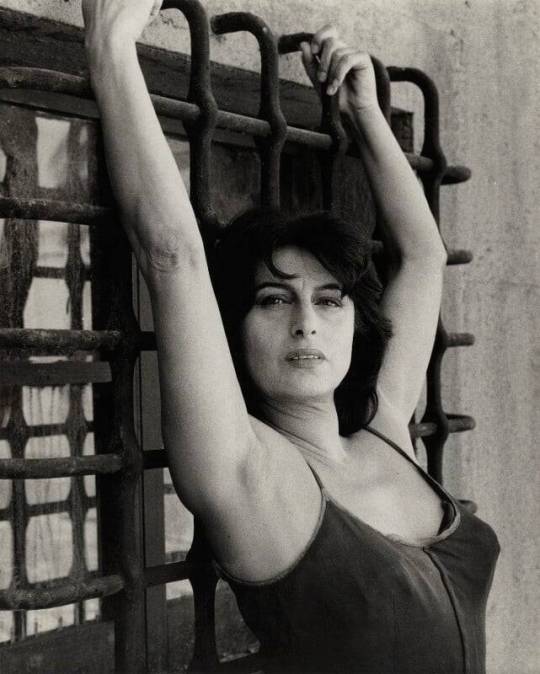
An icon of post-war neorealist italian cinema - an unbelievably good actress. Also, the first non-english speaking actress to win the Oscar for Best Actress (in 1956)!
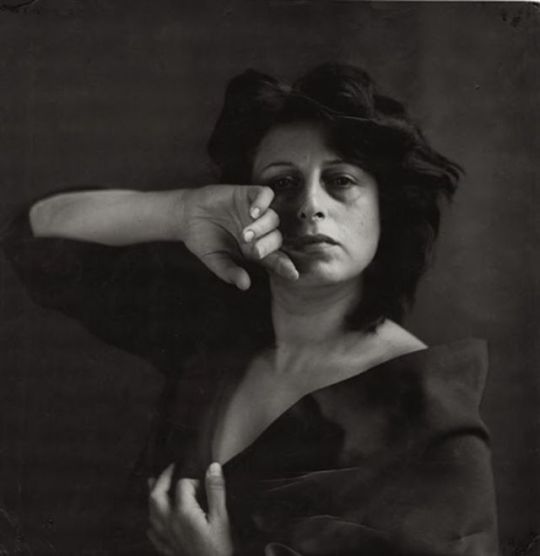
realness!! amid the typical hollywood pristine glamour anna magnani stuck out as sexy in a really real, grounded way. so much so that even shallow 40s hollywood allowed her to come over from italy to be in some high profile movies. an icon

She smoked, she drank, she didn't give a f-. Her acting was described as explosive, with a lot of emotions and drama and they called her a she-wolf. Playwright Tennessee Williams became an admirer of her acting and wrote The Rose Tattoo (1955) specifically for her to star in, a role for which she received an Academy Award for Best Actress, becoming the first Italian – and first non-English speaking woman – to win an Oscar.

Rosemary:

Rosemary Clooney made very few movies, and built her career mostly as a singer--however, anyone who has ever seen her in White Christmas understands that this was Hollywood's loss, because she exudes glamour and charm and does a wonderful job acting it as well. She's gorgeous, she has a beautiful voice, she has one of those faces that the screen just loves, and she is, frankly, hot as hell.
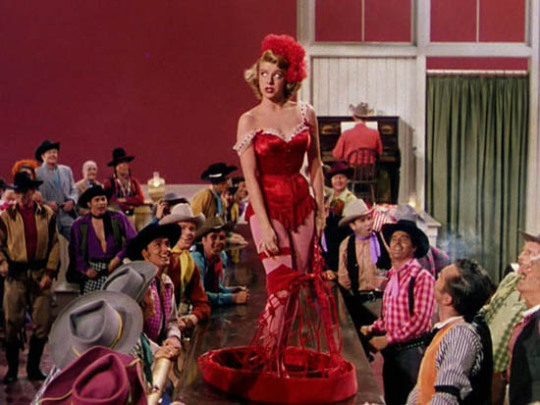
An absolutely amazing singer and so stunning. Her performance in that black dress in White Christmas just takes my breath away every time. She's also George Clooney's aunt.
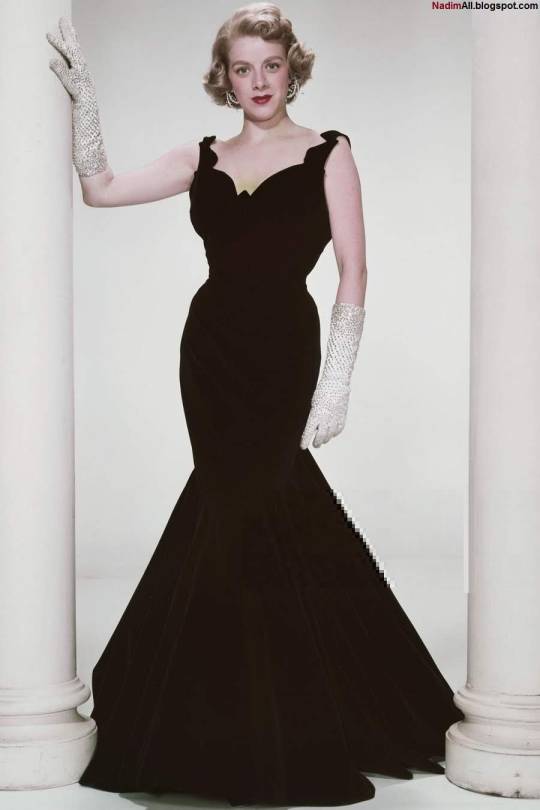
She was a very cool woman, who had a very hard life. She had severe mental health struggles throughout her life and left the stage for quite a while, but fought hard to make her career comeback later in life with a little timely help from good friend and frequent collaborator Bing Crosby. She also duetted with Marlene Dietrich early in her career
youtube
Okay so obviously she's more a singer than an actress, but she was still one of the best musical actresses of the era! They just didn't know what to do with her. She really wasn't a dancer at all, so you'll see most of the numbers in White Christmas she's got a convenient prop to sweep around. However, this ~weakness brought about a love story for the ages! Dante Di Paulo (you may know him as the mustachioed townie rival to the Pontipees in Seven Brides for Seven Brothers) was hired to teach her to dance and they fell in love over rehearsals. Separated by filming schedules, Rosemary ended up marrying José Ferrer and breaking Dante's heart, but 20 years and two divorces from José later they met in traffic. Not about to miss her second chance, she honked her horn and yelled her phone number at him (talk about carpe diem). He moved in a couple of months later but they finally made it official in 1997 because "our grandchildren want us to get married". They were utterly devoted to each other and he was very much a Wife Guy.
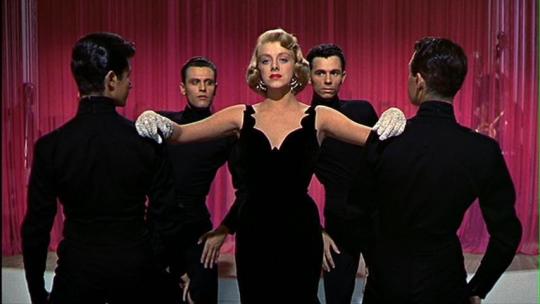
when she. when she. 'love you didnt do right by me' from white christmas-
She was very funny and very civic-minded, she campaigned with RFK during his presidential run. She had a very close bond with her nephew (that George Clooney yes), he even had her songs on the playlist when he proposed to his wife! She didn't enjoy singing this song from White Christmas, as it wasn't quite in her range, but she's incredibly powerful and undoubtedly very hot in this scene (fun fact, oscar winner George Chakiris is one of her dancers here, before his big break!) -
youtube
154 notes
·
View notes
Text
im writing a very short essay on the death saving throws in ep 3 of neverafter in comparison with neorealist italian cinema (theres a connection i swear) and its making my brain SO happy............
#like oh right i enjoy the writing part of academia...#esp when it involves writing about something i love#screw game engines i should be a ttrpg/actualplay scholar
5 notes
·
View notes
Photo

Lucia Bosé (1931-2020) by Truus, Bob & Jan too! Italian postcard by Bromofoto, Milano, no. 270. Today, 23 March 2020, Italian actress Lucia Bosé passed away in Brieva, Spain. She died of pneumonia caused by the coronavirus. Bosé was famous for her films from the 1950s with a.o. Giuseppe De Santis and Michelangelo Antonioni. In the same years and after she also worked with other famous directors such as Juan Bardem, Luis Buñuel, the Taviani brothers, Liliane Cavani, Francesco Rosi, and Ferzan Özpetek. Lucie Bosé was 89. Lucia Bosè was born Lucia Borloni in Milan, Italy in 1931. She comes from a peasant and working-class family and began to work at the age of twelve years. She was first a messenger for a law firm, later a clerk in Milan's fine pastry shop Galli. In 1947 she participated in the first Miss Italy pageant, where she was able to win against competitors like Gianna Maria Canale, Eleonora Rossi Drago, and Gina Lollobrigida. Had Giuseppe De Santis still preferred Silvana Mangano for Riso amaro/Bitter Rice (1949), he chose Bosè for his next film, Non c'è pace tra gli ulivi/No peace among the olive trees (Giuseppe De Santis, 1950), a typical Neorealist film about a poor shepherd (Raf Vallone) who tries steal back his sheep stolen from him while he was at war. In the same year, Bosé starred opposite Massimo Girotti in the well-to-do set, modernist crime story and drama Cronaca di un amore/Story of a love affair (Michelangelo Antonioni, 1950). It was Antonioni's first full length feature film, about an adulterous couple plotting to kill her husband. Numerous screen engagements followed. Antonioni cast her again in La signora senza camelie/The Lady Without Camelias (Michelangelo Antonioni, 1953) about a newly discovered starlet and her experiences in the Italian cinema. Juan Bardem cast her in Muerte di un ciclista/Death of a Cyclist (1955) about an adulterous couple that runs over a cyclist and leaves him to die. Bosé also acted in Francesco Maselli's debut Gli sbandati/The Abandoned (1955) and Luis Buñuel's Cela s'appelle l'aurore/That Is the Dawn (1956). In 1955 Lucia Bosè married Luis Miguel Dominguín, a five years older, popular Spanish bullfighter and occasional actor. From the marriage, which ended in divorce in 1967, sprang three children, two of whom - Paola Dominguin and Miguel Bosé - are also active as actors. Luchino Visconti was godfather to her son Miguel, Pablo Picasso to her daughter Paola. At the time, Lucia Bosè lived in Spain and put her career on halt, except for a sporadic appearance in Le testament d'Orphée/Testament of Orpheus (Jean Cocteau, 1959). In 1968 Bosé returned to film acting after almost a ten-year break and worked first in Spain and afterward in Italy. There she worked among others in Federico Fellini's Satyricon (1969), the Taviani Brothers' Sotto il segno dello scorpione/Under the Sign of Scorpio (1969), and Liliana Cavani's L'ospite/The Guest (1972). Other interesting films with her were Nathalie Granger (Marguerite Duras, 1972), Lumière (Jeanne Moreau, 1976) and Violanta (Daniel Schmid, 1977). After 1978, she acted significantly less but remained active, also on television. She had memorable film performances in Cronaca di una morte annunciata/Chronicle of a Death Foretold (Francesco Rosi, 1987) starring Rupert Everett, El niño de la Luna/Moon Child (Agustí Villaronga, 1989), Harem suaré/Harem (Ferzan Özpetek, 1999) and I vicerè/The Viceroy (Roberto Faenza, 2007). Her most recent screen appearance was in Alfonsina y el mar/One more time (Pablo Benedetti, David Sordella, 2013), as an 80-year-old actress who returns to the small Chilean town of her youth to fulfill her father's dream of creating a TV channel in a place which has never known television. Sources: CinéArtistes (French), Wikipedia (German, English, and Italian) and IMDb. https://flic.kr/p/2iH3q9T
13 notes
·
View notes
Text
CC's New Watch Ranking 2022: #3 - Germany Year Zero



1948, dir. Roberto Rossellini
Every year on Letterboxd, I make a list of the 100 best films I’ve seen for the first time. It’s a fun way to compare movies separated in time, genre, and country of origin, and helps me keep track of what I’m watching! This is a series of posts about my Top 10.
I spent a lot of time thinking about Rossellini last year. Especially his War Trilogy. (Shameless plug for my youtube page, I did a video on Paisan and Rome, Open City as an intro for a series of essays on Fellini. Check it out!)
During my lowest moments I really fear what the world is going to become over the course of my lifetime. Rising fascism, intolerance, climate change, wealth inequality… these things keep me up at night! I studied history in college. Whenever something bothers me, I look to the past for answers. There’s reassurance in knowing that everything I worry about has happened in some form somewhere. Since time immemorial, people in the past have tried to leave warnings for the future, guidance for avoiding their mistakes. You can’t always translate that advice 1:1, but you can take pieces of that knowledge when you can.
As I grapple with my country’s lazy strut towards fascism, I look to the cinema of post-war Italy. These filmmakers lived through the rise and fall of a similar ideology. They were all changed by the realities of war, and their art reflects it. Rossellini began his career as a propagandist, a child of wealth and privilege that got swept up in normalized authoritarianism before shifting paths during the war and becoming a staunch anti-fascist. It’s no surprise that the crown jewel of his post-war films, Germany Year Zero, follows a city of collaborators living in the rubble of their defeat. Rossellini understood better than anyone the ruin and monstrous emptiness that fascism and war leaves behind.
Germany Year Zero was shot in the remnants of Berlin after the end of World War 2. Rossellini shot it in the neorealist style he had developed: minimal sets, scripts, or production fussing. Casting actors he found on the spot, often non-professionals. Frequently shooting what we would now call “guerilla style.” Part of the terrible wonder of this film is that these choices make it so real. It gives the film a documentarian quality because it uses so, so many real elements that Rossellini discovered. Perhaps the most real element is the omnipresent despair that hands over every character.
The film follows a family living under the Allied occupation. They were full collaborators. Not passionate ideologues, perhaps, but in that true ‘banality of evil’ way that is presently leading so many conservatives to ruin. Everyone else is doing it, and it’s easier to keep your head down and believe the bloody dreams the government is selling. But now they live in the literal ruins of their beliefs. Their apartment is falling apart around them, and the interim authority has assigned other families to live with them, because the other buildings have been bombed through. They share no camaraderie - their experience of the war has made them distrustful and greedy. The eldest son of the family is in hiding, too. He was a Nazi soldier who fought to the bitter end, and hides from the authority for fear of being put on trial like the rest of his brigade. We see all this through the eyes of the youngest son, Edmund, whose entire life has basically been the Nazi regime.
Edmund is the perfect lens to view this destroyed world through. He is a literal child, and his view on events is immensely simple. His family is hungry, so he wants to help feed them. He wants to play with other children, so he goes to where they’re gathering. He is told he has to obey, so obey he does. But his mind has been twisted by the cruelty of the regime. He’s a product of his parent’s upbringing. When circumstances force the family to make drastic decisions, Edmund steps up as the ‘man of the house’ who has to make tough choices.
So, naturally, he kills his sick father so the family will have more to eat.
This is what you want, fascists! You want to train your boys to be killers, right? You want them to be strong, to do what is necessary for the Fatherland no matter what, right???? This film is a depiction of those ideas coming home to roost. The people left alive after the war have to reckon with themselves, with the horrible systems they’ve been propping up. Berlin is shown as a city of walking phantoms and lurking ghouls. The people are left with nothing.
In the end, wracked with guilt and still subsumed in the same misery he was in before, Edmund leaps off a building and dies. He kills himself because he reflects the despair and confusion that his entire world faces. He can’t see a way out, because literally all he has known is the message that there is nothing after fascism. He is too young to die - but this is what this ideology does to people. It makes them believe there is nothing but itself, that a life of forgiveness and penitence is impossible.
The feeling of this film is what’s going to permeate Russia in a few years. It’s what’s going to be left in the right-wing circles of America. It’s already being seen. Broken, sad, stupid people living in the consequences of the misery they perpetuated on the world. It serves no one, it builds nothing, it only leaves us with rubble on which we can try to build. This film is a stark warning to those who would try to embrace this evil system. You will not receive an empire that lasts a thousand years - your civilization will be reset to zero, and you will be left with nothing as your children suffer and rebuild with the heaping trash you have left them.
~~~~~~~~~~~~~~~~~~~
Thank you for reading! If you made it this far why don’t you give me a follow on Letterboxd, where I post reviews and keep obsessive track of all the movies I watch. Feel free to drop a line if you checked this movie out and want to share your thoughts!
6 notes
·
View notes